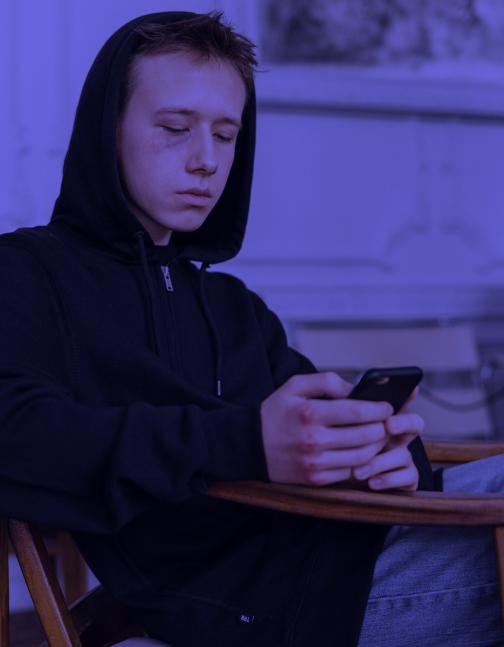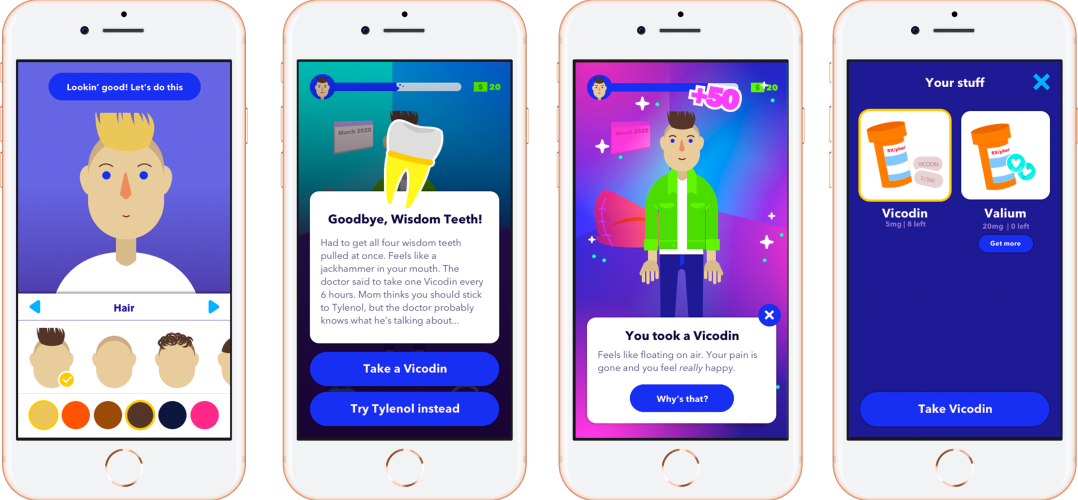
Challenge
Our client came to us with a pretty open-ended brief: design an engaging experience to help educate youth and teens about opioid abuse prevention. She wanted a proof of concept to help unlock grant funding for her non-profit.
Solution
We created a Tamogatchi-like mobile game in which players took care of an avatar of themselves, navigating a teenage life fraught with risky options - but healthy ones, too. The gameplay and options were based on real addiction science, which was explained to the player through an educational component, giving them the information they needed to make an informed decision and a safe space in which to experiement.
Research
There was a small problem: we didn’t know anything about opioid addiction, public health campaigns, or teens. So we started with desk research and subject matter expert interviews.
Unfortunately, there is scant data on what works and doesn’t work in the opioid prevention space. There have been few effective PSAs or campaigns, not that outcomes are even tracked in any significant way.
How do you get through to teenagers? What narrative do you have to tell them and what role should they play in that narrative? I tried to remember being a teenager, remembered the longing for agency and control. Who were they, anyway? Who drove their cultural norms? Influencers? Celebrities? Their parents?
We learned about risk and protective factors (things that increase and decrease the chance of addiction, respectively). We learned that teenagers have a hard time conceptualizing consequences so you have to help them visualize it; that if you exaggerate the consequence, they won’t take it seriously; that you can’t shame them. We also researched game design and what makes games so – for lack of a better word – addictive.
Concept & Design
I came up with four concepts, all of them based on the idea of an interactive tool with a focus on the teenage user’s real life:
1
An immersive, narrative video setting up a scenario in which the user is at a party and is offered drugs. There are several points at which the user makes a choice to engage or not. Give teens an opportunity to practice saying no, inspired by Beghain Trainer, a site which lets people practice getting past the bouncer at the notoriously difficult-to-get-into Berlin nightclub.
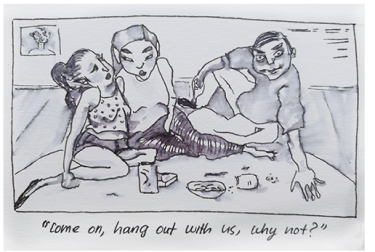
2
A text-based, choose-your-own-adventure game in which teens identify who they are and what they hold dear and are sent through a narrative in which their choices lead to consequences.
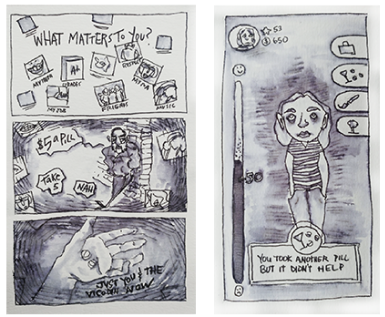
3
A Tamagochi-like game in which users take care of their future selves. They personalize their avatar and make choices that affect them one month, 6 months, a year, 5 years, 20 years down the line.
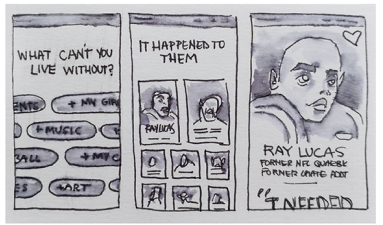
4
Collect user’s info and interests and from that, deduce which celebrities, influencers and other users they would find relatable. Provide them with a media rich experience in which they could explore these people’s stories.
Developing the Proof-of-concept
The client was most excited about Option 3, but a few ideas from the other options found their way into our final product.
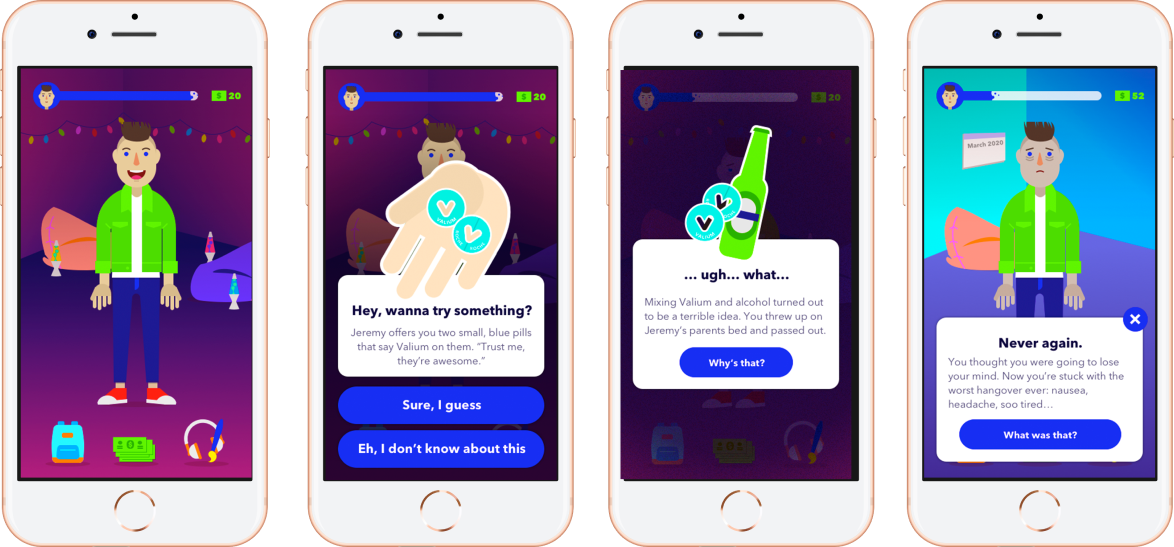
We worked out a story based on our research into drug abuse and teenage behavioral patterns: the user would be faced with several events during which they would have riskier or safer choices. To begin, a doctor prescribes them painkillers for a pulled tooth (the most common way people begin taking opioids). Later, they’re invited to a party and offered drugs. They’re able to make money. Decide what to spend that money on. Make art. Keep doing drugs… or not.
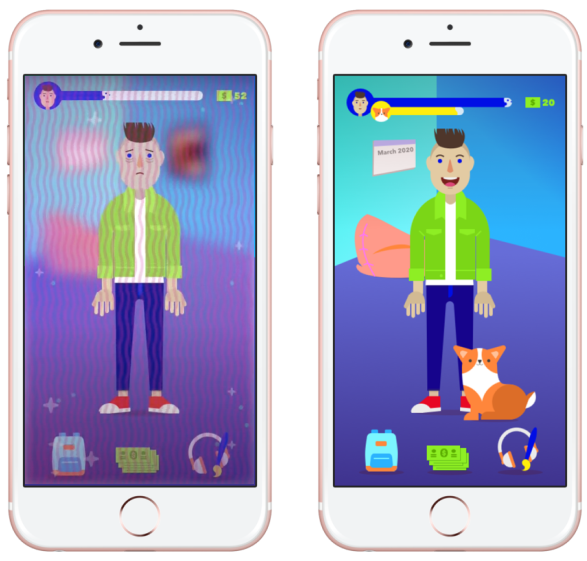
After laying out a storyline from the prototype we were creating, I wrote out a list of design assets I needed to illustrate (hairstyles, pet Corgi, DXM high), organized them by category, put on my headphones, and cranked them out.
After that, using Principle, I put together a prototype which we then used to record a walk through of the game demonstrating the core features. Check it out below.
We packaged up all the assets for the client and helped her with some salient points she could use in her grant proposal presentation. The client loved it, and so did the board – she received the grant!
